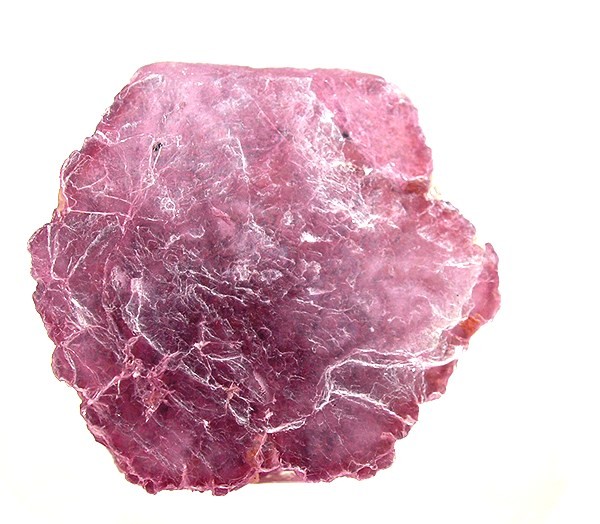
def. Lepidolite:
A pink, lilac, or gray-white, lithium-rich, Mica Group mineral with the formula K(Li, Al)2-3(AlSi3O10)(O,OH,F)2.
Geologists (and laypeople) often talk about the “mineral” mica, but mica is not really a mineral. Rather, mica is the name of a group of minerals. The micas are phyllosilicate minerals, which means that they are comprised of flat sheets. In Micas, these flat sheets are piled together in stacks. The word “phyllo” comes from Greek and means “leaf.” To remember the word phyllosilicate, I always think of phyllo dough, which is a dough made up of thin, flat sheets piled up and used to make pastries such as baklava or spinach pie. Phyllo dough is generally made up of flour, water, and a little sugar. Phyllosilicates, on the other hand, are made up of thin sheets of silicon and oxygen in a 2:5 ratio. Micas also have some aluminum and potassium thrown into the structure. Micas are basically stacked sheets of aluminum, silicon, and oxygen that are held together by charged potassium (K+). If you want to read more about the structure of phyllosilicates and Micas in particular, I recommend these excellent notes I found on a Smith College Geoscience website.
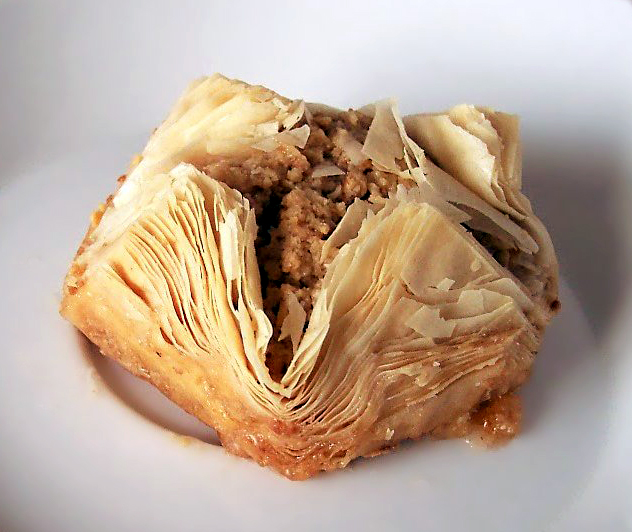
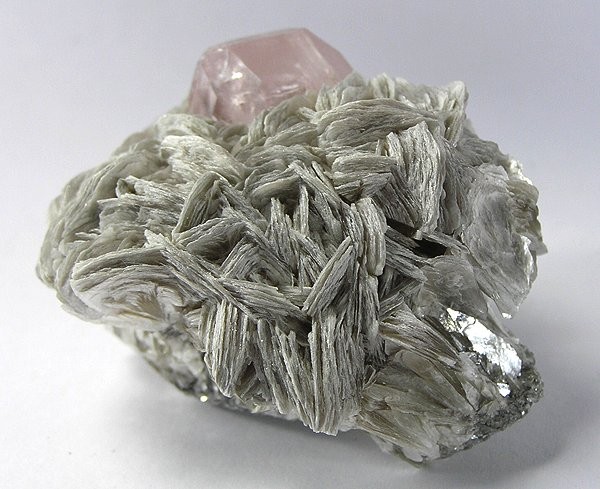
Lepidolite is similar in composition and structure to the silver plates of muscovite mica and the brown-black plates of biotite mica that are common rock-forming minerals in rocks such as granites. However, lepidolite contains a significant amount of the element lithium (in the same place where aluminum sits in muscovite and other micas). In fact, lepidolite is sometimes mined for lithium although generally only because it is associated with other lithium-rich minerals such as spodumene (formula: LiAl(SiO3)2).
Lepidolite is a fairly rare mineral, generally found in something called a pegmatite, which is a very coarse-grained igneous deposit in which large crystals (sometimes amazingly large crystals!) were able to grow because of special conditions. In order to grow large crystals and form pegmatites, igneous bodies must cool very slowly and also have high rates of diffusion (high rates of transport of elements, basically), generally aided through the presence of water or vapor or both. Pegmatites often have high concentrations of lithium because lithium (as well as boron and other large elements) lowers the solidification temperatures (basically by being big edit: when thinking about relative sizes of elements, remember to consider ionic raidus as elements are generally in charged forms in crystal structures) of magmas, giving the crystals more time to grow. Lepidolites often form intermixed with muscovite and other mica minerals as well as with other lithium-bearing minerals such as spodumene, amblygonite, beryl, and tourmaline. Lepidolite most often occurs in pegmatites associated with granite bodies.
Lepidolite is a gorgeous mineral, especially when it is bright pink and lavender. My fellow AGU blogger Jessica Ball recently observed and collected some lepidolite during her visit to the Harding Pegmatite Mine in New Mexico. Jessica was kind enough to send me some pictures of gorgeous purple lepidolite from the Harding Pegmatite:
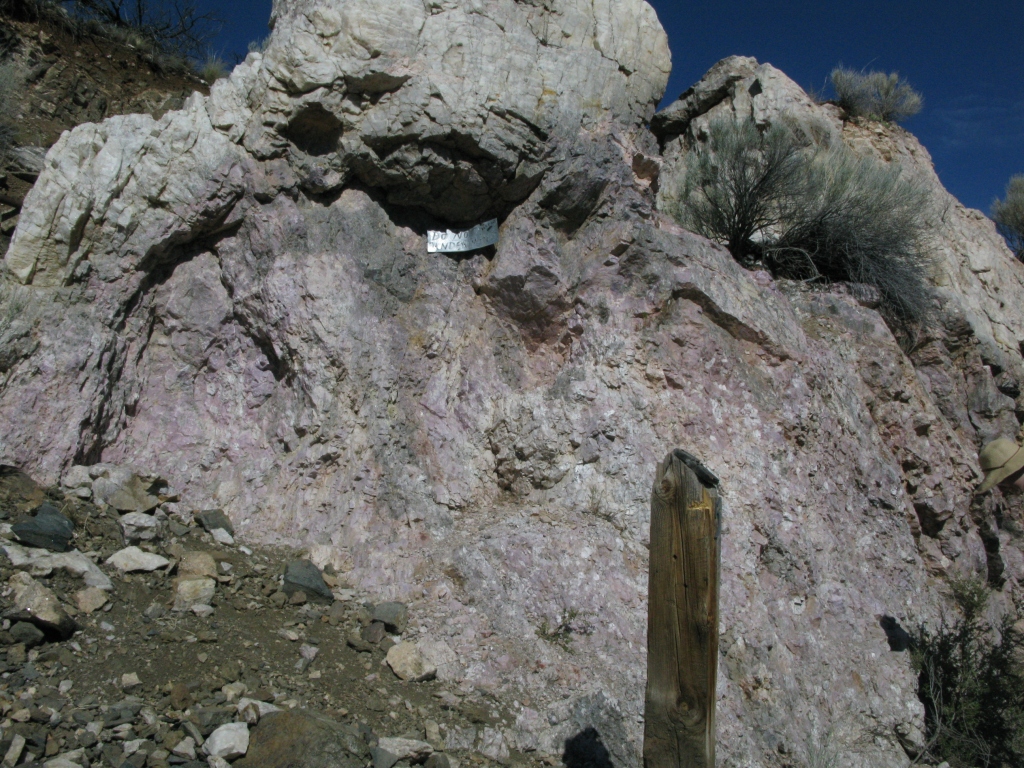
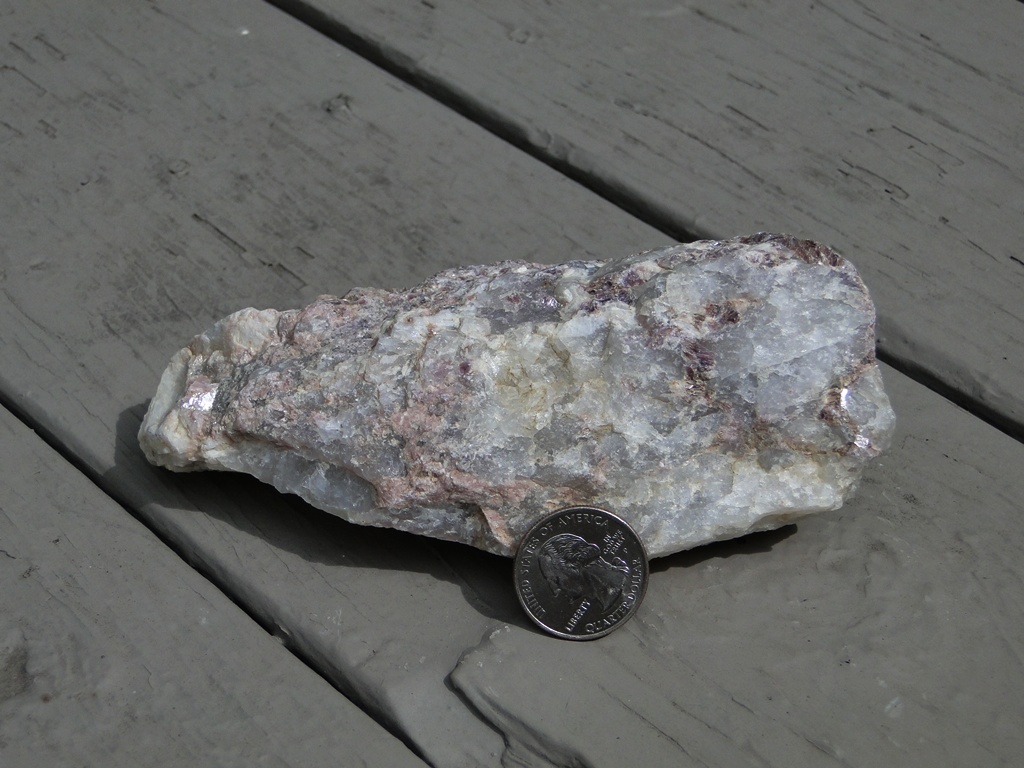
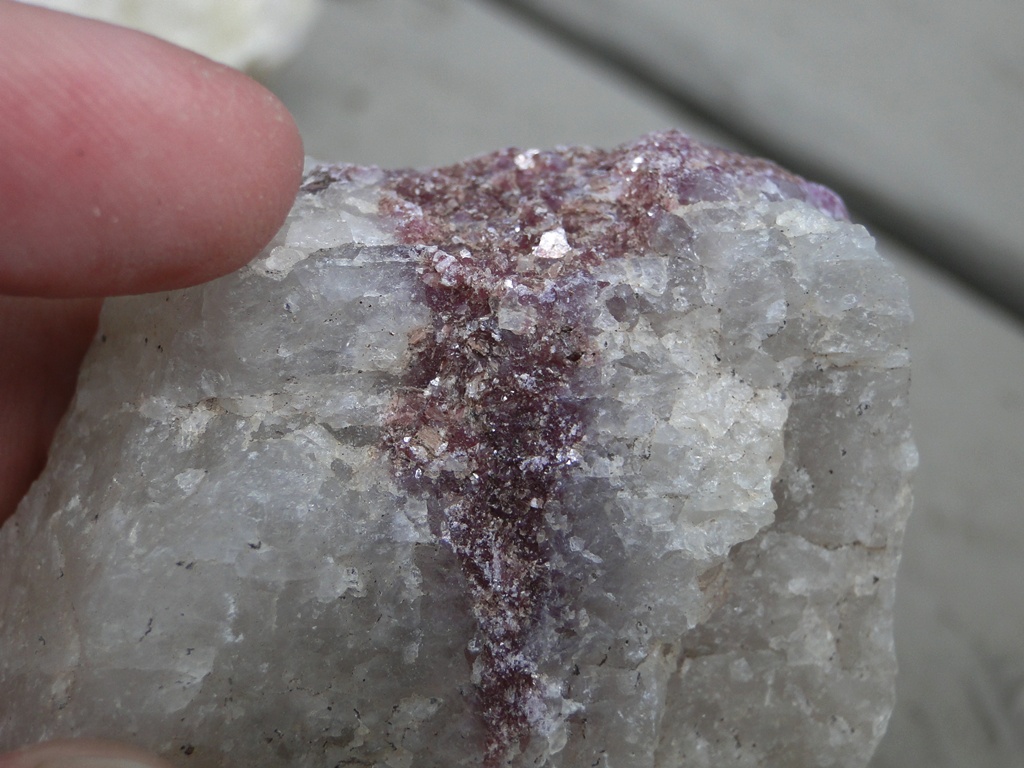
References:
Klein, Cornelius. 2002. The 22nd Edition of the Manual of Mineral Science. John Wiley & Sons.
Deer, W.A., Howie, R.A., and Zussman, J. 1992. An Introduction to the Rock-Forming Minerals, 2nd Edition. New York: Pearson Education Limited.

Wow! JUST after eating dinner, you had to make my hungry again with the reminder of baklava and spinach pie!
Nice samples there too! Especially, the muscovite mica.
Off topic, perhaps an article on seismic propagation might be in order, after this morning’s Virginia earthquake?
I’m in Delaware County, PA, just south of Philadelphia International Airport and felt it.
First, I was disoriented, not quite understanding why I was shaking, my arms on the table were shaking and the computer was shaking. Then, I noticed my water bottle and saw the water moving.
“What the hell?! We’re having an earthquake!”
No noises from the house itself, but my oldest daughter heard cracking sounds from her house walls two miles away.
Can’t recall all of the details right now on our geological composition HERE, but I recall it was a bit complex in this part of the state.
LikeLike
“Pegmatites often have high concentrations of lithium because lithium (as well as boron and other large elements) lowers the solidification temperatures (basically by being big and getting in the way) of magmas”
I’m confused by this. Aren’t Lithium, Boron, and other light elements relatively small? I would think either way (smaller or larger) they’d inhibit crystallization by making it harder for atoms to line up in neat little rows.
LikeLike
John– you’re correct. They are smaller. Clearly, I wrote this post up too quickly… let me muse/ read up on the matter a little bit more. Anyone else have some insight?
LikeLike
Oops. I’ve done the same.
I’m a network security professional and had to give military briefings to commanders.
I’ve “Goobered” it down a bit too much and ended up with hour long explanations, where a slide or two would’ve sufficed for basic background information.
It happens, when one simplifies a rather complex and detail oriented science.
THAT said, I’ll admit, you passed me on the left by a bit with the article, especially with the food reference of some favorites AND I was distracted by my home moving, which is something that DOESN’T HAPPEN here…
Got some good book references so that I can learn the vast area of minerals?
Perhaps provide a small bibliography of starting points for articles?
Yeah, MAJOR PIA land, but, GREAT for those of us who LOVE learning new things!
A GOOD reference for geology of Texas would be REALLY cool, as that is a tomorrow project and would save me some research time (see BA’s blog on the earthquake reference for my interest. MOST made sense, from a GENERAL composition memory, Texas is an overall blank for me…).
LikeLike
Actually, I think I was mistaken. I did a Google Images search for “atomic radii” and got a number of diagrams showing that Li does have a bigger radius than Al and many other elements. Now that I think of it, I remember from chemistry class that the more electrons an atom has in its outer shell (i.e., the farther to the right you go) the smaller the atom since the number of protons increases and pulls the electrons closer inwards, which would explain why Li is large despite having only three electrons.
LikeLike
John- the trends go both ways. Across the periodic table there is generally shrinking, but down the periodic table there is generally increase in the size of the atom. And, of course, one also has to take charge into consideration since any atoms are charged when they are incorporated as part of a crystal structure. I think Li is slightly bigger than Al and Si, but B is a little bit smaller… think this merits further investigation…
Really, though, it’s all about the size of the regular structure. If a particular atom is too big or too small for a particular structural space, then this will affect crystallization.
Thanks for keeping me on my toes! Sorry I can’t investigate this further right now… swamped with thesis work at the moment!
LikeLike
The ionic radii are what’s important. Since Al is usually (well, always, except for metallic aluminum) Al+++, it has a small radius. The high charge density draws the electron orbitals closer to the nucleus. Litihum is only Li+, so the lower charge density makes the ion larger.
Alkali metals lower the melting temperature of silicates by changing their structure. Since alkali metals do not form covalent bonds, they weaken the structure by leaving oxygen atoms with one less covalent bond.
LikeLike
Yes, ionic radius is the key…. makes sense!
LikeLike
Ages ago, I studied some of the math behind that. The stuff nightmares and headaches are made of, all quantumy and all. 😉
Made a lot of sense, but the math would give you nosebleeds…
Never was great at geology. The large picture stuff is simple enough, knowing each mineral, impossible for me.
That said, it’s nice to know a contact if I ever build a spacecraft to visit some asteroids and grab some samples. 😉
LikeLike
This is a pretty one. I had forgotten this mineral. You are keeping my geology knowledge up.
LikeLike
I’m always playing catch-up on geology here.
When I was in school, we had elements only.
Earth, water, fire and wind… 😉
LikeLike
Really you have done great job,There are may person searching about that now they will find enough resources by your post.I like this blog..
LikeLike
This is interesting feature for every one who wants to make their own website. Weebly web designer platform helps to create website with different categories as Business, personal, entertainment and many more.
LikeLike
What mineral gives Lithium it’s purple color?
LikeLike